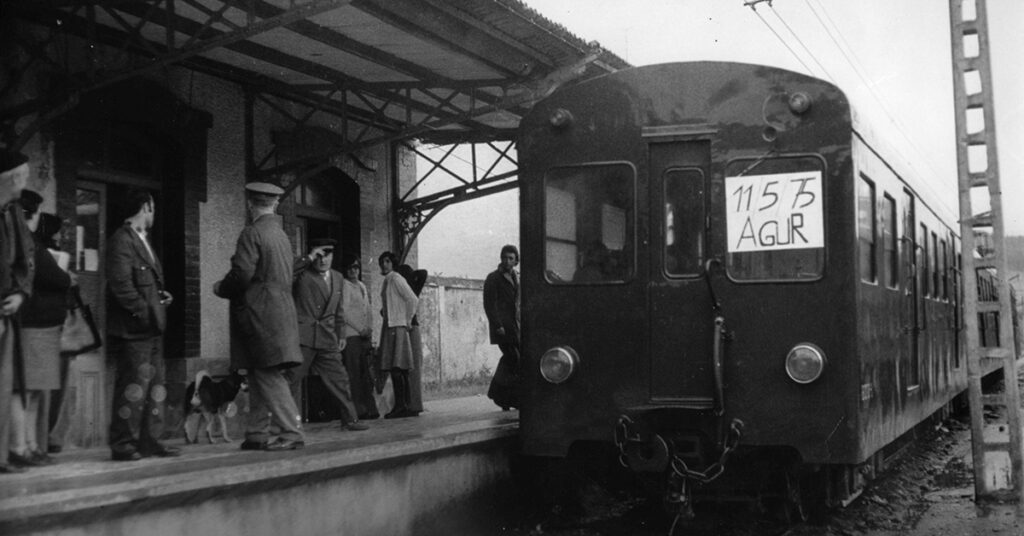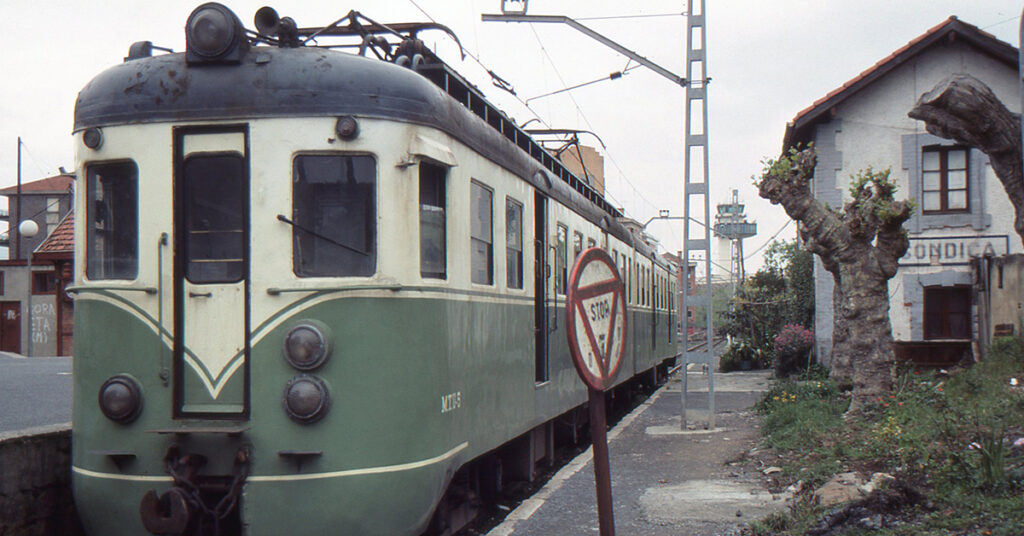Basque ethnography at a glance
In days gone by, the train was the means of travelling between many towns and the capital, as few families owned their own vehicle. Towns that did not have a station or a train stop were served by bus, which also supplemented the available rail service. A train journey today makes us feel nostalgic as we watch the landscape go by. It takes us back to our childhood when we travelled with our parents.
The railway transported people, goods and the mail. The arrival of loved ones was a reason for happiness, while the farewells were the time of sadness and tears. The train took the workers and students to their places of work or their destination. To the medical specialist, to boarding schools, to hospitals to visit the sick, the circus… The train delivered and returned the rolls of film that were shown in the cinemas.
The milk-producing towns transported the milk in large churns to the capital, where it was collected to be delivered to homes. In agricultural villages, such as the Gernikaldea district, the hawkers took the train to buy goods at market to resell in Bilbao or other locations. The fisherwomen from coastal towns, particularly Bermeo, took fresh or ember-grilled fish, such as tuna flank, to sell it in the inland towns.
Parcels were deposited in a storage locker or warehouse of the rail station; the delivery was often entrusted to a postman using a wagon pulled by horse or mule, or to an errand person using a metal trolley. They both delivered to businesses and companies. Private individuals would go and pick up the shipments themselves.
There was also an errand service, usually run by women, who would bring from the city, by train or bus, those products that were difficult to find in the town, or deliver parcels or carry out a formalities or paperwork.
In summer, the train transported families with children to the beach. Young people used it to go to the summer festivities in nearby towns. The young men, in particular, would stay on the rear platforms or hang from the sides of the train. The seats were made from wood and anybody travelling without a ticket tried to escape the inspector, and sometimes unsuccessfully.
As the risk was slight, children who lived near the station played hide-and-seek and other games in the coaches, moving from one to the other.
Segundo Oar-Arteta — Labayru Fundazioa



